The Second Hanle Dark Sky Reserve Star Party observed in Ladakh
Expert astro-photographers and amateur astronomers came together at the Hanle Dark Sky Reserve between 29 September to 4 October 2024, for the second Star Party.
The unique event was organised by the Indian Institute of Astrophysics (IIA) an autonomous institute of the Department of Science and Technology (DST) in collaboration with Department of Wildlife Protection of UT Ladakh, and Bhabha Atomic Research Centre (BARC) and was attended by more than 45 astronomy enthusiasts from across the country.
Hanle and the surrounding region are host to some of the darkest night skies in India. Hence, the Hanle Dark Sky Reserve (HDSR), centred around the Indian Astronomical Observatory, was notified by the Govt. of Ladakh in December 2022, and since then, it has been a major attraction for astro-tourism from across the country.
“The Indian Astronomical Observatory operated by IIA hosts professional telescopes from our institute as well as those from other organisations, and many more are expected to be built in the future, since this is the best available astronomical site in the country”, said Annapurni Subramaniam, Director of IIA. “We are specially delighted that, through the HDSR project, the Observatory has been connecting with the local communities in a substantial and meaningful fashion. This Star Party, which has attracted so many passionate amateur astronomers, is yet another way in which HDSR brings together the cosmos and the people who love the night sky”, she added.
HDSR is a science based socio-economic development project, which aims to preserve the darkness of the night sky through various measures to curb light pollution, coupled with an astro-tourism program wherein local villagers have been provided telescopes and trained to be astro-tourism guides or HDSR Astronomy Ambassadors, thereby earning revenue for the local community.
Hanle holds a special place among the amateur astronomy community in India. The extremely dark sky, along with the exceptionally clear and transparent atmosphere, allows serious astronomy enthusiasts to visually see, as well as photograph, faint celestial objects which cannot be done from other locations. The participants of the Star Party, chosen from more than 200 people who had registered based on their experience and expertise, came from across India, including Bengaluru, Pune, Mumbai, Delhi, Goa, Coimbatore, Ahmedabad, Hyderabad, etc. They brought their telescopes and cameras with them all the way to the Indian Astronomical Observatory in Hanle, and carried out their meticulously planned observations in the biting cold of Hanle throughout the four nights.
To capture the uniqueness of Hanle Dark Sky Reserve for visual observations, a list of 7 visually detectable objects, all of which can be seen best at Hanle, was compiled by Ajay and Neelam Talwar, renowned astro-photographers from Delhi and frequent visitors to Hanle. This “Seven Wonders of the Hanle Dark Sky Reserve Night Sky” was released by IIA on 29 September, during a day long workshop on amateur astronomy at its Raman Science Centre in Leh. Said Ajay Talwar, “We compiled this list based on our observations from Hanle over many years. The fact that all of these can be seen with the unaided eye, and also require the spectacular skies of Hanle to see them all, will inspire other astronomy enthusiasts who visit here in the future”.
Many enthusiasts from established associations like Jyotirvidya Parisanstha in Pune, Khagol Mandal in Mumbai, and the Association of Amateur Astronomers of Delhi were also participants in the event. Many lectures were also organised, including a master class on star trails by Vikas Chander, a demonstration on planetary photography by Sona Shukla, and a talk on astronomy inspired art by Rohini Devasher.
“We decided to have an Open Night on 2 October, so that tourists can take advantage of the numerous amateur telescopes available at the party. We received more than 450 tourists during the Party, who were shown various celestial events by our HDSR Astronomy Ambassadors”, said Niruj Mohan Ramanujam, one of the organisers of the event from IIA.
Many of these Ambassadors were also participants of the Star Party, which presented an excellent learning opportunity for them in the company of expert astro-photographers.
“The uniqueness of the Hanle Dark Sky Reserve cannot be overstated. The participation of so many amateur astronomers from various parts of India at this Star Party, who came here at substantial personal expense, is a testament to the importance of preserving the night sky in this region,” Dorje Angchuk, Engineer-in-charge of the Indian Astronomical Observatory pointed out.
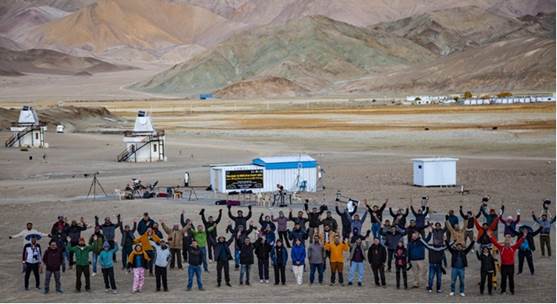
The Star Party participants at the Hanle Dark Sky Reserve, with two HAGAR telescopes in the background.
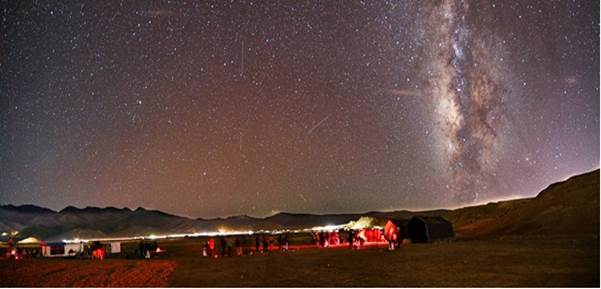
The Milky Way overlooking the Star Party participants working at their telescopes.
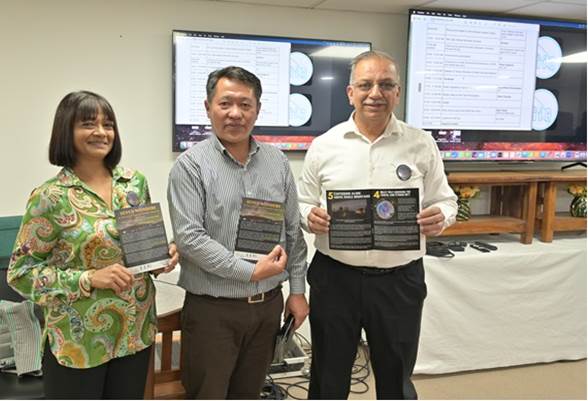
Release of the “Seven Wonders of the Hanle Dark Sky Reserve Night Sky”, by (left to right) Neelam Talwar, Dorje Angchuk (IIA), and Ajay Talwar.
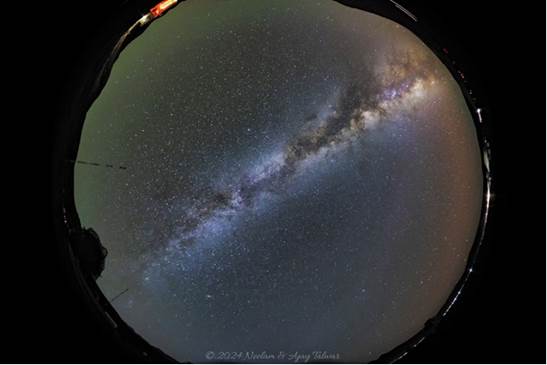
The Hanle night sky captured by a fish eye lens.
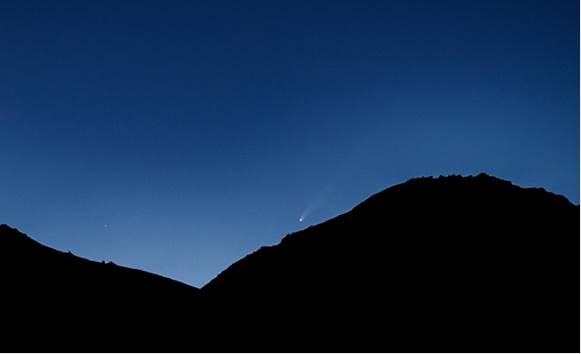
The comet C/2023 A3 (Tsuchinshan–ATLAS) photographed at the Star Party rising from behind the eastern hills of Hanle in the early morning.

